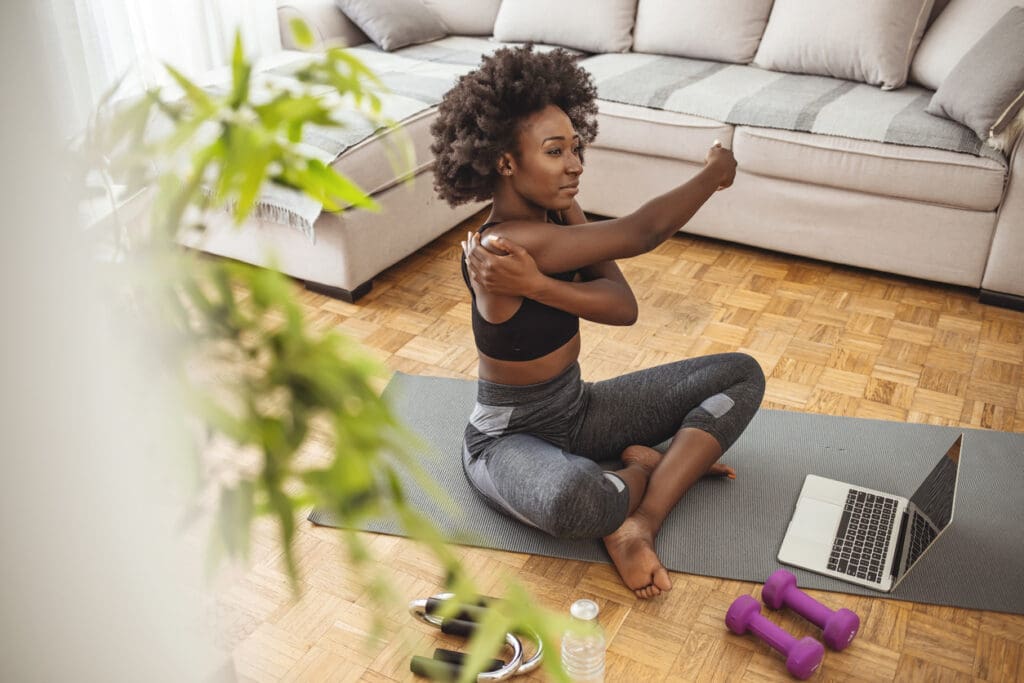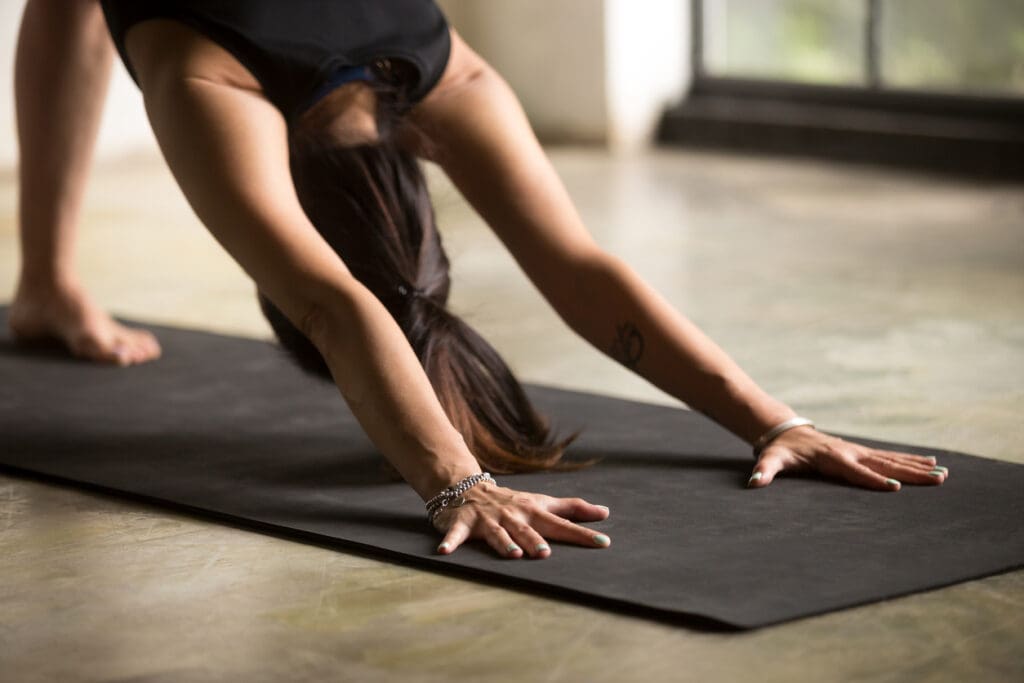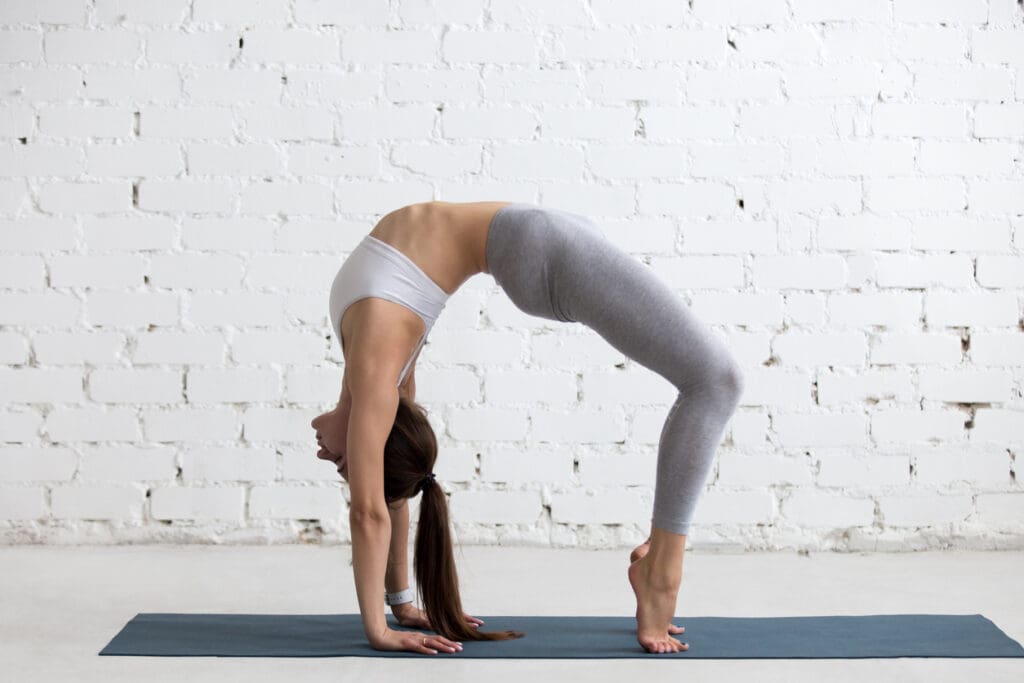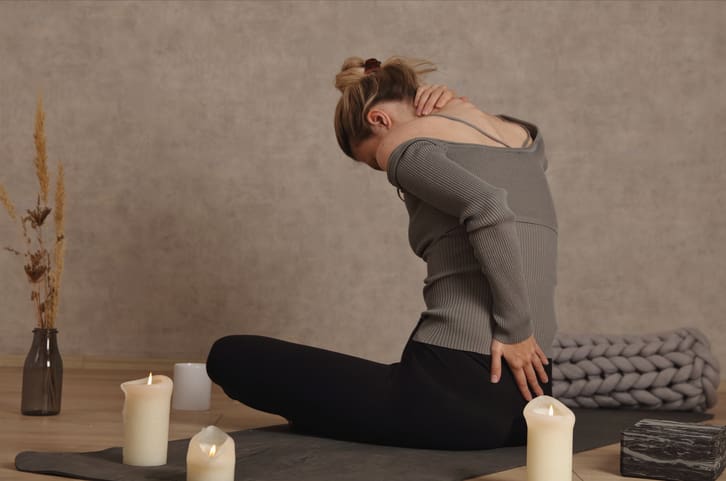Mental Health
Personal Tidbits
Hypermobility
The world of yoga is filled with yogis that seem like ethereal beings, bending themselves in half or practically balancing on the tips of their nose. You know the type: the beautiful practitioners on yoga, with soft lighting and probably some plants nearby. Most of us, myself included, will never accomplish this. And after all of my research, I’m not sure I ever want to.
Because being hypermobile and practicing yoga can be disastrous.
The even more bad news? Practicing yoga with a hypermobile body almost guarantees long-term pain and possibly injury. Don’t worry though! There are solutions and in time, you can enjoy yoga while being hypermobile.

What Is Hypermobility?
If you’re at the start of your journey to hypermobility, welcome! When I first started my journey, it felt like lightbulb after lightbulb going off. I kept saying, “Oh, so that’s why my elbow hurts,” or “This is why my gut is always a friggin’ mess!”
So what exactly is hypermobility?
Well, it really boils down to collagen. Collagen is the main ingredient to keeping your body together. It’s in your skin, your muscles, and your tendons. Your whole meatsuit connects because of this fabulous biological ingredient.
However, hypermobile folks have collagen that is in perpetual vacation brain. It’s like the collagen doesn’t reallllly want to be there, so anytime it needs to do something, it’s like, “I guess, if you insist.”
Collagen is intended to be tough as steel, but on the extreme side of the hypermobile spectrum it’s more like a wet noodle. Making skin elastic, tendons overstretch, joints weeble wobble, and so, so, so much more.
Another issue? When the collagen is too loosey goosey, the synapsis of communication between the tissue, joints, and brain are slowed down. Sometimes, significantly. Remember this!

Why Hypermobility And Yoga Are Frenemies
I’ve been practicing yoga since I was a teenager. I’ve never been a savant at it, not like some other super bendy contortionists. My hamstrings have always been unforgiving and now that I know what I know…I’m glad.
There’s a lot of science terms behind anatomy, but anatomy can be quite boring, so let me break it down quick for you:
Range of Motion
Every joint in your body has a range of motion. Basically, most bodies will go, “Excuse me, that’s too damn far!” when you extend a joint too far. However, when your collagen is too elastic, these messages get fumbled sometimes. It’s like trying to talk underwater. If you ever played that game in the pool as a kid, where you dunk under and scream something for the other person to guess…it’s kinda like that. Sometimes it’s clear and sometimes it’s just, well, not.
As a result, hypermobile people have further ranges of motion, not only because of the natural elasticity, but also the joint struggles to even recognize when enough is enough.
So you have what is called Active Range of Motion (AROM) and Passive Range of Motion (PROM). Active Range of Motion is ideal, because your muscles essentially control the range. Once your muscles aren’t activated, then your tendons take over. Your tendons are not built to bear weight, only to facilitate movement. See how that can be an issue?
Passive Range of Motion is when you use gravity or tools, like yoga straps, to go beyond the muscles being activated. Your muscles are far more protective than you might think, which is why PROM is dangerous. Think of Pigeon Pose, when a yogi relaxes to rest their head on the ground. No muscles are activated and gravity is taking over. Gravity is not your friend here.

Peer Pressure Is Alive and Well
The yoga industry varies wildly in its presentation…sorta. I’m betting you can think of at least three Instagram posts with a svelte yoga practitioner doing a handstand with a neutral, but holistic background. I’m also betting you can remember a time you thought, “I’ll never be able to do that.”
I’m here to tell you it’s okay if you’re never able to do that.
One of the most toxic prompts a yoga instructor can give is, “See if you can go a little deeper.” Because that moment, that additional push, could be the difference between feeling great or having an injury to nurse for six months.
Trying to look like someone who is most likely causing long-term harm to their body—this sounds judgy, but it’s unfortunately true—will only toss you into the same boat. No one wants a hip replacement at the age of 50 years old, right?
The Regurgitation of Prompting
“Draw your shoulders away from your ears.”
“On your next exhale, push yourself a little deeper into this pose.”
“Roll your body up into Tadasana, one vertebrae at a time.”
Do these prompts sound familiar at all? Unfortunately, they all spell d-i-s-a-s-t-e-r for people with hypermobility. The biggest issue for yoga instructors is that they learn how to give prompts by other yoga instructors, who learned those prompts from other yoga instructors. So on and so on.
But I’ll tell you right now, the lack of information and studies on hypermobility means most prompts don’t take elastic joints into account. Just last month, I was talking to a yoga instructor about his shoulder. I observed the way he moved and he was definitely hypermobile. His knees bent backwards and his ankle could bend at a 90-degree angle.
Yikes on bikes, y’all.
I asked him if he was hypermobile and he goes, “What’s that.”
I was surprised and yet, not surprised at all. The science of hypermobility is understudied because, well, the majority of the demographic are women. Women are notoriously under-studied and under-represented in scientific studies.
As such, it’s vital for people to learn about their hypermobility as much as possible, because only you can advocate for yourself in a yoga sequence.

Should Hypermobile People Practice Yoga?
Yes and no.
Certain types of yoga should be avoided, mainly because styles like Vinyasa flows so fast, it’s hard to maintain control over the joints. I’ve also been learning how yin yoga can also be problematic because it requires staying in a pose for 3-5 minutes, which is only great for connective tissue made of steel-like material.
Strengthening should always be a focus for any hypermobile person. You must lift weights. If you only stretch and avoid balancing, you’ll continue to hurt yourself. I promise.
So if you’re hypermobile, then make sure you focus on avoiding Passive Range of Motion (put the straps down, friend). Aim to sink into only about 80% of your range of motion, never completely to where you’re able. If you’re a long-time practitioner, this will be a very difficult experience. Going from being a bendy superstar to scaling back a bit can require a slight identity change. It’s tough work, but if you’ve made it this far in the article, then I know you at least have fortitude!
Wrapping Up
I’m still on my journey to understanding hypermobility and how it affects me personally. If you’re reading this, you probably are as well. I’m glad you’re here. We’re in this together, even if we don’t know one another personally.
Yoga can still be a way to shine and protect your wobbly bits and bobbles. If you’re looking for any one-on-one guidance, I recommend you reach out and schedule a consult. Who knows—maybe it could change the way you live inside your body!
Is Hypermobility Bad For Practicing Yoga?

Back To The Blog